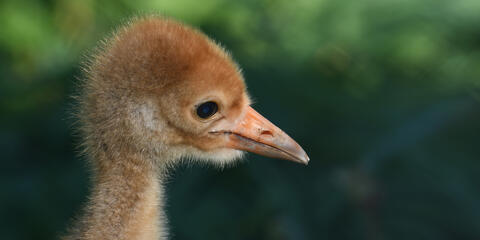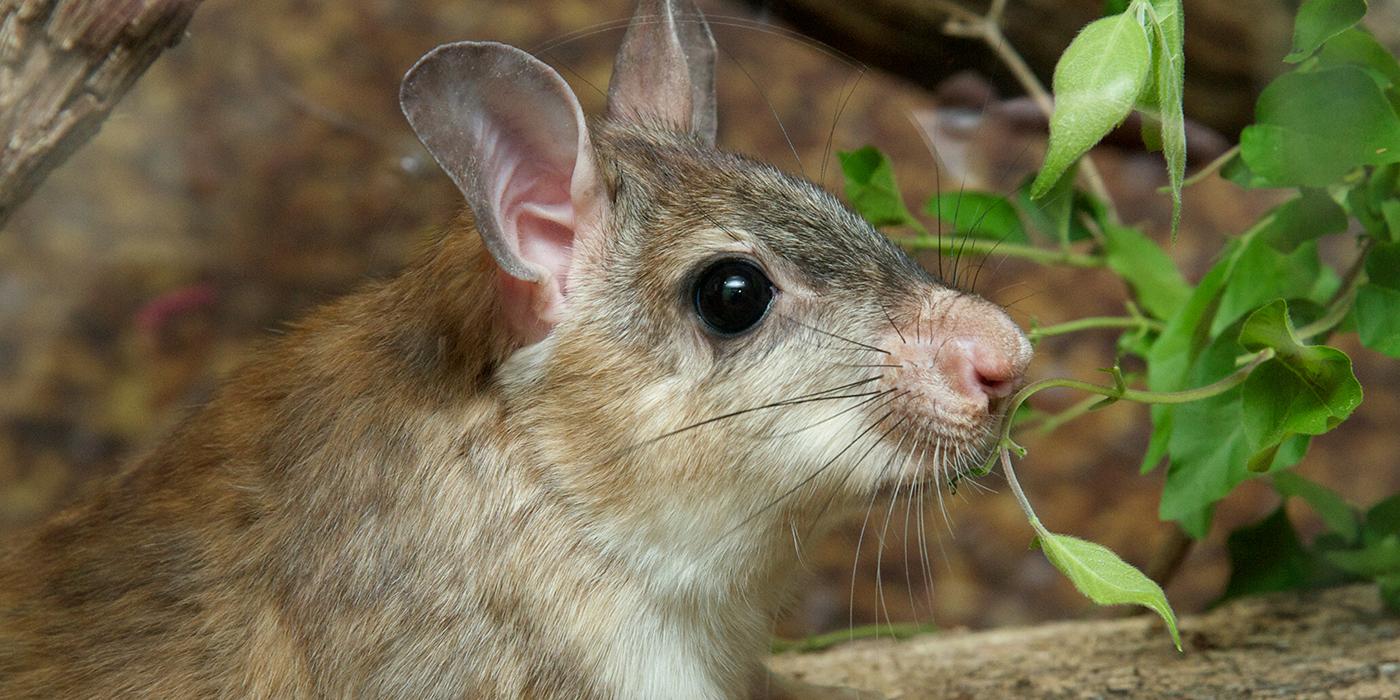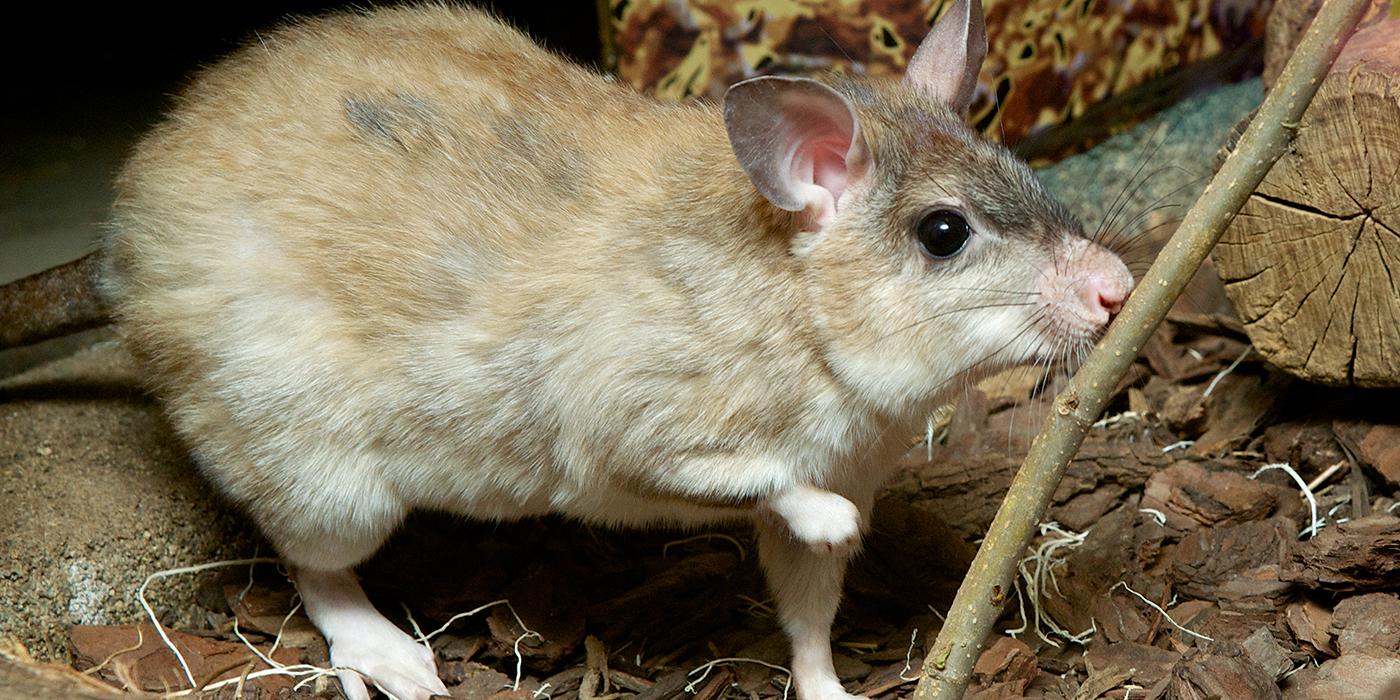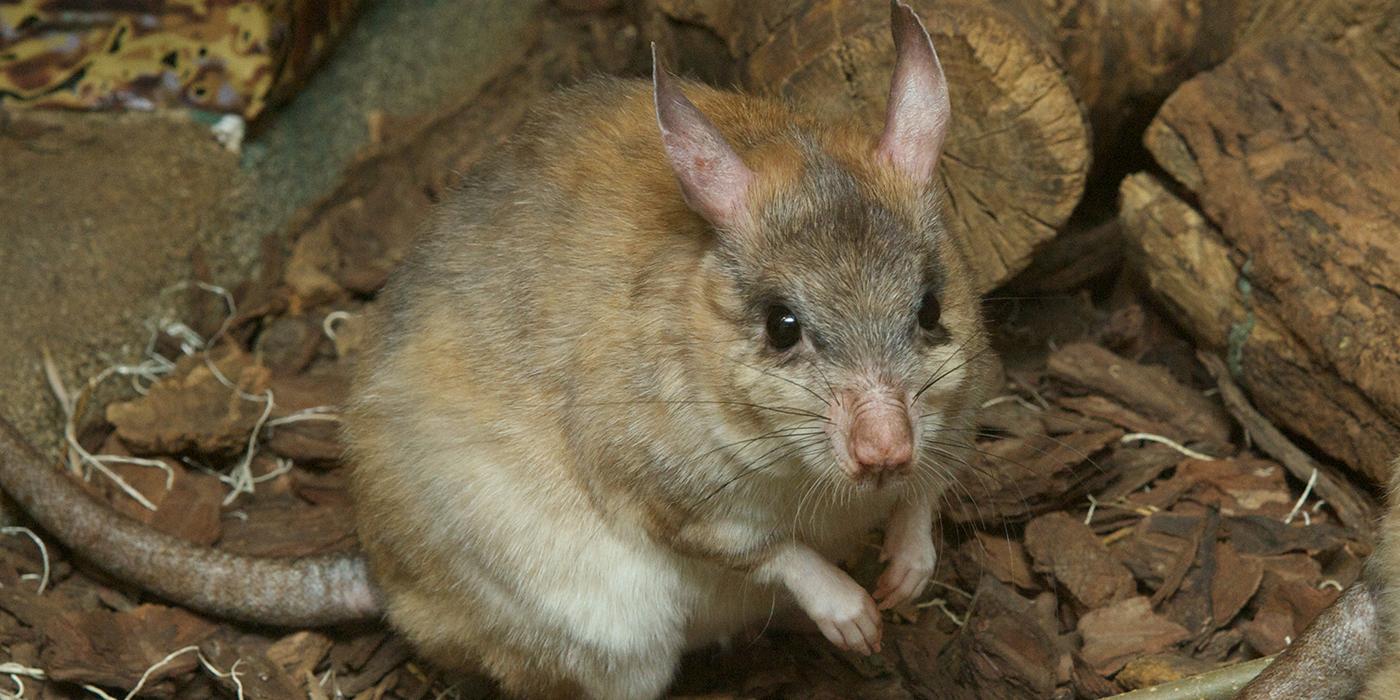Physical Description
This species looks more like a rabbit than a rat, considering its large ears, large back feet and prodigious jumping ability. Malagasy giant jumping rats jump almost exclusively when evading predators and can leap vertically almost 40 inches (100 centimeters). Usually, however, they walk.
They are typically gray to grayish brown or reddish, with the head having the darkest coloration. Their limbs, feet and the underside of their body are white or pale, and their tail has short, stiff, dark hairs.
Size
Malagasy giant jumping rats weigh an average of 2-3 pounds (1-1.5 kilograms) and grow 12-14 inches (30-35 centimeters) long, with an additional 8-10 inches (21-25 centimeters) in tail length.
Native Habitat
They are exclusive to Madagascar, occurring in a small area on the eastern coast of the island. Their preferred habitat consists of sandy coastal areas and mature deciduous forests.
Lifespan
In human care, Malagasy giant jumping rats have been known to live up to 10 years. There is little information about their lifespan in the wild.
Food/Eating Habits
Primarily herbivorous, Malagasy giant jumping rats will forage on fallen fruit and seeds. They have also been observed stripping bark from saplings.
Sleep Habits
They are nocturnal and forage alone or in pairs at night.
Social Structure
Giant jumping rats are a monogamous species, and during the day mated pairs and their offspring rest in long, deep burrows. These complex tunnel systems extend 17 feet (5 meters) with one to six entry holes. Burrows are used for raising offspring and seeking protection from heat, rain and predation. Malagasy giant jumping rats are territorial, and will defend and mark a 7- to 10-acre area.
Reproduction and Development
Malagasy giant jumping rats are monogamous until one mate dies. Males will expose themselves to a greater risk for predation in order to protect their young, and adult males have been observed following their offspring in order to protect them from predators when they leave the burrow.
Births in the wild occur during the rainy season (December to April), but can be year-round in human care. Gestation ranges from 102 to 138 days, with one to two offspring produced per litter. Offspring do not leave the burrow for the first four to six weeks of their lives. They stay with their parents for varying amounts of time depending upon when sexual maturity is reached. Female offspring may stay for more than two years, while males typically leave the burrow after one year to establish their own territory and begin the search for a mate.
Conservation Efforts
Habitat loss and predation from introduced animals, such as feral dogs and cats, have helped make this species one of the most endangered Madagascar mammals. Much of Madagascar has experienced great habitat loss as a result of human interference, including slash and burn agriculture, illegal and commercial logging, and charcoal production.
The range of the Malagasy giant jumping rat is extremely small, and their remaining territory is drying out due to climate change. They are also losing habitat due to human interference; a road was built that cuts through their range, making them more accessible to hunters, cats and dogs, and further fragmenting their habitat. Malagasy giant jumping rats are also vulnerable to diseases from feral dogs and cats including toxoplasmosis and hantavirus.
Conservation efforts in place to help protect this species are underway. A new protected area covers their entire range, and comes with a temporary protection order. A breeding program has been established by the Durrell Wildlife Conservation Trust, and there is ongoing research into potential pathogens that could affect these animals. This species has also been categorized as an Evolutionarily Distinct and Globally Endangered (EDGE) species.
Help this Species
- Reduce, reuse and recycle — in that order! Cut back on single-use goods, and find creative ways to reuse products at the end of their life cycle. Choose recycling over trash when possible.
- Share the story of this animal with others. Simply raising awareness about this species can contribute to its overall protection.
- Are you a student? Did you love what you learned about this animal? Make it the topic of your next school project, or start a conservation club at your school. You'll learn even more and share the importance of saving species with classmates and teachers, too.
- Less is more. Cut down on the demand for resources by consuming less. Buy only what you need, and look for pre-owned or repurposed items before purchasing something brand new.
Animal News
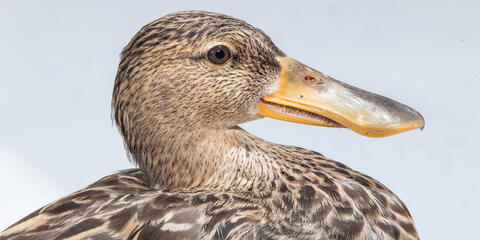
Historic Hatching: Northern Shoveler Ducklings
